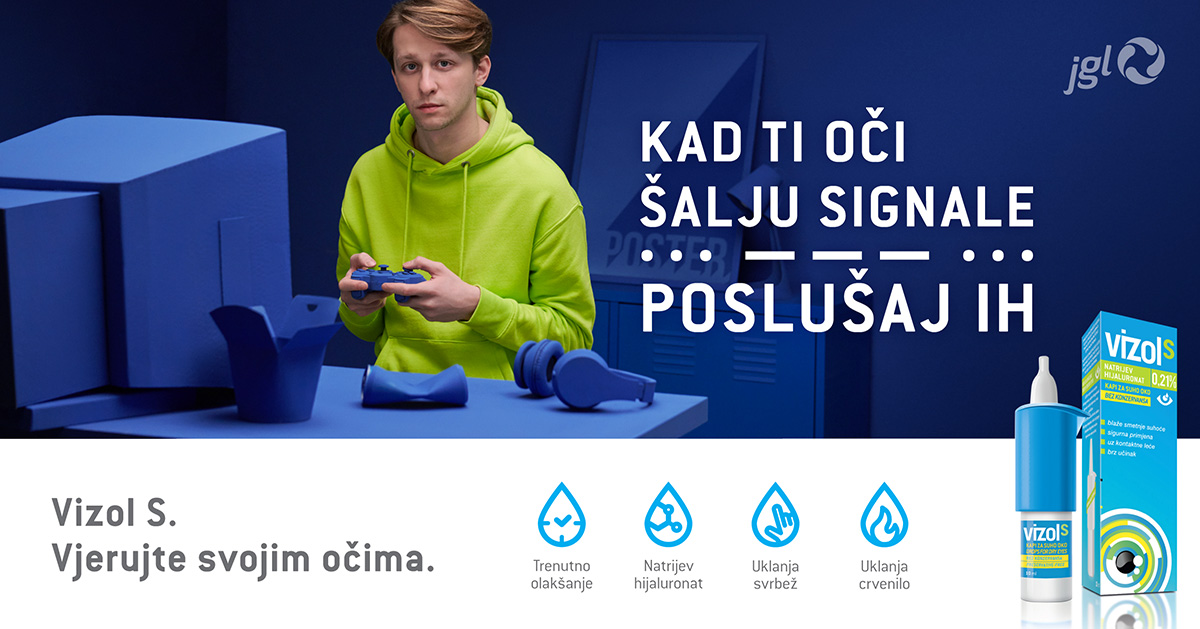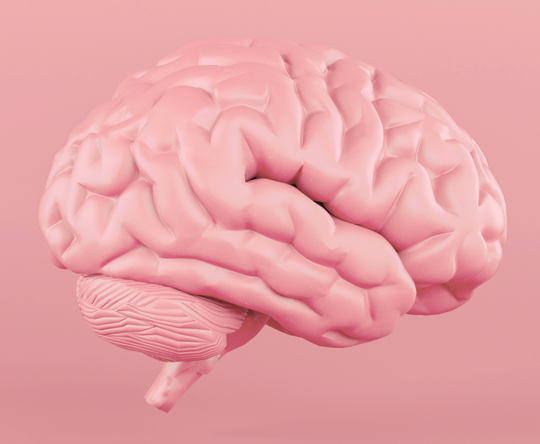The eyes are an important part of our body and we can take care of them the most if we live a healthy life.
Although we can contribute the most to the development of a child’s vision at a very early age, electrophysiological tests have shown that neural connections are formed and the visual pathway is optimized as late as the age of 20. It is very important to prevent the development of myopia in children, which is becoming an increasing problem for school-age children. For X-Lab JGL, prominent ophthalmologist Asst. Prof. Manca Tekavčič Pompe explains how to react to the first symptoms that indicate vision problems in children in time.
According to estimates by the World Health Organization, there are a total of 2.2 billion people in the world who have an eye disease, and for at least a billion of them the disease could have been prevented. Apart from aging and genetic predispositions, eye health is influenced by many other factors we have control over ourselves, which enables us to prevent disease and improve our health. This is why leading ophthalmologists, neurologists, endocrinologists, psychiatrists, rheumatologists, otorhinolaryngologists, plastic surgeons, general practitioners, pharmacists and engineers have gathered together at X-Lab — the expert research hub by JGL — to analyse the latest research and, by applying a holistic approach, to share with us share how to take care of our eye health and why that is important for our whole bodies.
1 Vision is not fully developed in newborns. What does this mean, how long does it take for vision to develop and how does this happen?
A healthy newborn has developed eyes, a developed visual pathway, as well as the brain’s vision centre, but their vision has not yet been exposed to external stimuli, so newborns have yet to learn how to use it. In their first days of life, the newborn follows larger objects with their eyes, and in a few weeks, they consciously respond with a smile when they see their mother’s face. From birth, mothers participate in establishing eye contact with their baby, initially this mainly occurs during feeding when the newborn is closely watching the mother. Responses to visual stimuli may develop more slowly and gradually, depending on the child, but at six weeks babies should develop quality eye contact with the mother, consciously laugh when they see her even though she is not directly engaging them and they should be able to direct their gaze at large items. In the earliest period, the baby likes to observe contrasting black and white patterns, it is later that they are attracted to colours and faces.
As early as preschool age, their visual perception gradually acquires the characteristics of adult vision. Therefore, undetected refractive error of the eye or other undetected eye diseases in preschool and early school age can have irreversible consequences on vision development. This refers in particular to the amblyogenic risk factor that develops up to the age of 15. During this period, it is extremely important to identify potential amblyogenic risk factors and treat them properly, such as encouraging the use of a child’s lazy eye by covering the healthy eye; to detect and surgically treat congenital cataracts early; to prescribe appropriate glasses upon doing tests such as cycloplegic refraction, etc.
Although we can contribute the most to the development of a child’s vision at a very early age, electrophysiological tests have shown that neural connections are formed and the visual pathway is optimized as late as the age of 20
2 What are the signs that parents should look for that indicate healthy eye development?
In the earliest period, parents should pay attention to how the newborn reacts to visual stimuli: do they follow objects with their eyes at six weeks old; do they establish good eye contact with the mother; do they recognize the mother’s face and laugh at her? In the first year of life, excessive tearing of the eyes is a common problem, as well as inflammation of the conjunctiva. This is caused by a narrowing of the tear duct that connects the eye to the nose. In the vast majority of children, the tear duct develops properly, parents only need to regularly massage the tear sac several times a day, as indicated by their paediatrician. A very important indicator of healthy and properly developed system of vision is the symmetrical “red eye effect” in the pupils. That’s why I suggest parents take photos of their child with a phone or camera with the flash turned on and the with red-eye correction option turned off.
Later in the preschool period, it is important for parents to pay attention to the child squinting, having eye strain, rolling their eyes or turning their head when they want to see something clearly. All these signs require an ophthalmological examination.
3 How is it that the eyes never need rest, but the ciliary muscle in the eye that sharpens the image is the smallest and most active muscle in the body?
The claim that the eyes do not need rest is not entirely correct. We all know situations when we are very tired in the evening and find it harder to focus the image or we find it harder to focus on visual stimuli, or when we look at the screen all day and our eyes start to warn us so that there is a feeling of sand in our eyes. It is true, however, that we cannot consciously control the tiny muscles at the edge of the pupil that open and close the pupil and thus regulate the amount of light that enters the eye. They are controlled by nerves, so the pupil dilates, for example, when we are scared (hence the “wide-eyed” connotations of fear).
Both muscles at the edge of the pupil, the dilator and the sphincter, also respond to the amount of light in the environment. When there is a lot of light, the pupil shrinks (the sphincter is activated) thus preventing too much potentially harmful light from reaching the retina. When there is little light, the pupil dilates (the dilator is activated) so we can see in the dark better. From this point of view, it is true that the eye never rests.
4 How do eyes age? We have fewer and fewer tears, but what else happens to our eyes and our vision with age?
The easiest way we to imagine our eyes aging is a reduction in elasticity of the eye tissue Aging of the eye is usually noticed when we no longer see something we used to be able to see fairly recently. The reason for this is a weakening in the eye’s accommodation capacity, which means that our accommodation apparatus can no longer adapt to certain distances when reading as it was once able to. For a while, we can compensate for this problem by ensuring good lighting, but eventually reading glasses become necessary. In addition to the accommodation apparatus, other tissues and structures of the eye are also susceptible to aging.
The surface of the eye becomes more and more dry, and the lens of the eye becomes harder, and then age-related macular degeneration or something similar can easily develop. Given that the life expectancy of the population is getting longer, we can say with certainty that these problems of eye aging will become more and more frequent.
5 How can we protect the health of our eyes easily?
The eyes are an important part of our body and we can take care of them the most if we live a healthy life. Healthy living means getting enough exercise and sleep, eating a healthy, regular and varied diet, controlling stress and avoiding habits such as smoking and excessive alcohol consumption. However, we have to protect our eyes especially when performing tasks that often expose them to damage (e.g., mowing the lawn, welding, etc.). Protect your eyes from the sun with sunglasses that do not let in harmful rays of light. When working in front of screens for a long time, we must be aware that reflexively we blink less, and thus we increase the dryness of the eye surface, so in such cases it is recommended you use eye drops.
It is very important to prevent the development of myopia in children, which is becoming an increasing problem for school-age children. The 20-20-2 rule should be followed: after every 20 minutes of eye strain, a child should look into the distance for 20 seconds, and spend two hours outside every day with a natural light source.
QUIZ
SUFFERING FROM DRY EYE SYNDROME? ANSWER THESE QUESTIONS AND FIND OUT HOW TO PREVENT IT AND WHAT TO DO WHEN YOU ARE ALREADY FEELING THE SYMPTOMS
QUIZ





